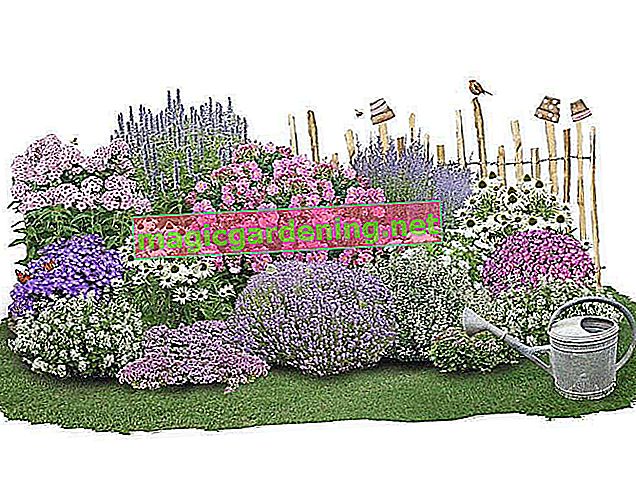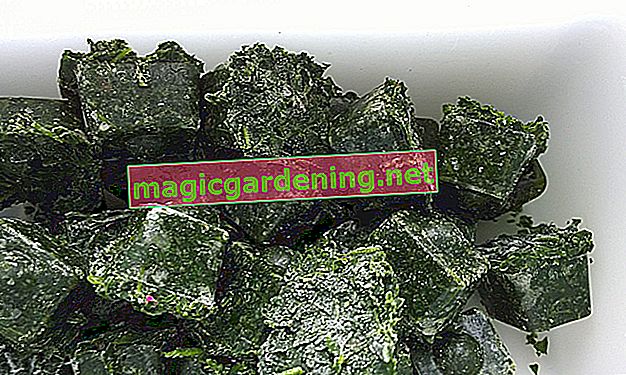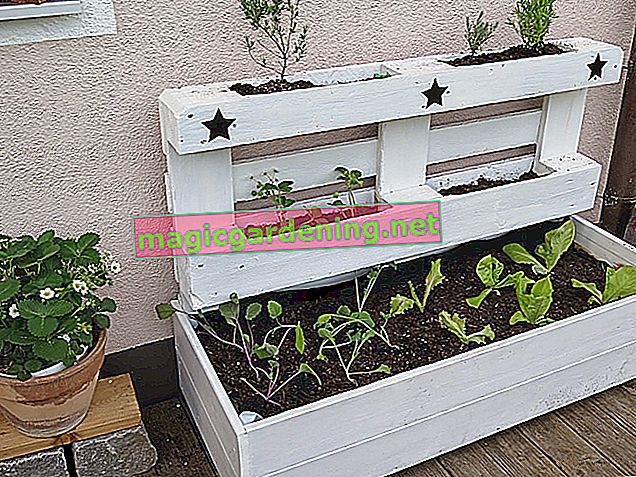
What are perennials?
Perennials are perennial, non-woody plants that overwinter in the ground with the help of rhizomes, tubers or bulbs and sprout again in spring. They can be cultivated in beds but also in pots, even if they may need winter protection as a potted plant, as the roots are exposed to stronger cold here.
Perennials are not always flowers. There are also vegetables, climbing plants, ferns, rose plants and even pond plants that are part of the perennials. The height of growth varies greatly, even if they rarely exceed a meter, because perennials, as I said, do not lignify. In winter, the outer leaf parts usually die off, even if there are some evergreen perennials.
also read
- Make the perennial bed hardy
- Create a perennial bed with roses
- Make the perennial bed blooming all year round
The most beautiful perennials for your perennial bed
When choosing the perennials for your perennial bed, you should not only consider aesthetic aspects such as the flower color and the height of growth, you should also pay particular attention to the location requirements of the perennials. Not all perennials thrive in blazing midday sun. Those who plant shade-loving perennials in the sun will only get a few flowers. Only those who consider the location requirements of their plants will be able to enjoy the abundance of flowers.
Most of the perennials are available in different colors, often also in different growth forms, i.e. as a carpet plant or tall perennial such as the astilbe or the bellflower. The most important perennial families are:
- lavender
- aster
- Bellflower
- Cranesbill
- anemone
- thyme
- Astilbe
- Honorary award
- Nettles
- sage
- Sun hat
- Hostas
- phlox
- Peony
- Cloves
- Lilies
- delphinium
- yarrow
- Houseleek
- Mint and peppermint
- Sedum species
- Ornamental onion
- Blue pillows
- Veronica
The most beautiful design ideas for the perennial bed
There are many different aspects to consider when designing a perennial bed. Here are a few ideas to think about when planning:
- The border of the bed: A perennial bed should be separated from the garden with stones, wood or border plants.
- the height of the perennials: taller perennials should be planted in the middle, small perennials and ground cover should be planted on the edge.
- Decorative elements: large stones, decorative planters, water elements or antique devices such as wheelbarrows or the like can turn a perennial bed into an extraordinary garden spectacle.
You can find out more about planning your perennial bed here.
Color combinations for the perennial bed

When it comes to the color design of perennial beds, tastes diverge: Some like it colorful, others like it sunny yellow and still others like elegant white. For example, color combinations such as blue-white or violet-white or red, orange and yellow look particularly beautiful.
When choosing, also pay attention to the flowering time. Do you want all the perennials to bloom at the same time and transform your perennial bed into an impressive sea of flowers, or do you want something to bloom all year round?
Perennials with purple or pink flowers
- Balkan strawbill
- Blue pillow 'blue tit'
- Blood cranesbill
- Real thyme
- Autumn anemone 'rose bowl'
- Hedgehog onion
- Potato carnation
- Moroccan mint
- Peony 'Sarah Bernhard'
- Magnificent cranesbill 'Vital'
- Sage 'Caradonna'
- 'Magnus' sun hat
- Star ball leek
- Carpet bellflower 'Birch'
- Carpet spar
- Thyme 'Coccineus'
- many varieties of lavender
- Dwarf funky
- Dwarf cranesbill 'Ballerina'
Perennials with white flowers
Example perennials with white flowers:
- Aster 'Snow Flurry'
- Balcony cranesbill 'White-Ness'
- Blue pillow 'Fiona'
- Blue pillow 'Winterling'
- Wood anemone
- China anemone
- Honorary Award 'Snow Series'
- Stuffed yarrow 'The Pearl'
- Heather Carnation 'Albus'
- Japanese anemone 'Honorine Jobert'
- Lavender 'Hidcote White'
- Lavender 'Nana Alba'
- peppermint
- Peony 'Festiva Maxima'
- Sage 'Adrian'
- 'Alba' sun hat
- Carpet phlox 'Maischnee'
- Thyme 'Albus'
- Forest anemone
- Forest bellflower 'Alba'
- White Blood Cranesbill 'Album'

Perennials with yellow or orange flowers
- Columbine 'Yellow Queen'
- Fettblatt 'Weihenstephaner Gold'
- Yellow cowslip
- Yellow faux sun hat
- Golden hair grid
- Stonecrop
- Sun bride 'Waltraud'
- 'Tiki Torch' sun hat
- Daylily 'Stella de Oro'
- Carpet yarrow 'Aurea'
- Tibetan bell primrose
- Tripmadame
- many varieties of girl's eyes
- Water iris
- Winter aster 'Citronella'
Create a perennial bed step by step
1. Planning
Before you get to work, you should plan your perennial bed. To do this, measure out your perennial bed and draw a rough sketch. Think about which flower color (s) should dominate and look at perennials on the Internet or in gardening shops. Make a note of the names and flower color of those you like, then arrange them on your sketch. When arranging the arrangement, consider the height of the individual plants. Note the planting distance! After you've set your plants on paper, you will have a better idea of how many perennials you will need. Also plan space for any decorative elements.
2. Stake out and prepare soil
Then mark out the perennial bed in your garden. Thoroughly dig up the soil and remove roots, stones and weeds. If the soil is poor, it can make sense to dig some compost under the ground.
3. Plant perennials
Now put your perennials. Work your way from the inside out. Finally, water your plants.
4. Place decorative elements
Now is the time to place your decorative elements. If you have made a mistake with the space, it is still possible to move and reorganize individual plants.
To protect against drying out and weeds for a more beautiful look, you can cover the soil with mulch, pebbles or similar at the end.
5. Bed border
Last but not least, the bed border is set, which visually delimits your perennial bed and prevents, for example, ground cover from spreading on the lawn.








